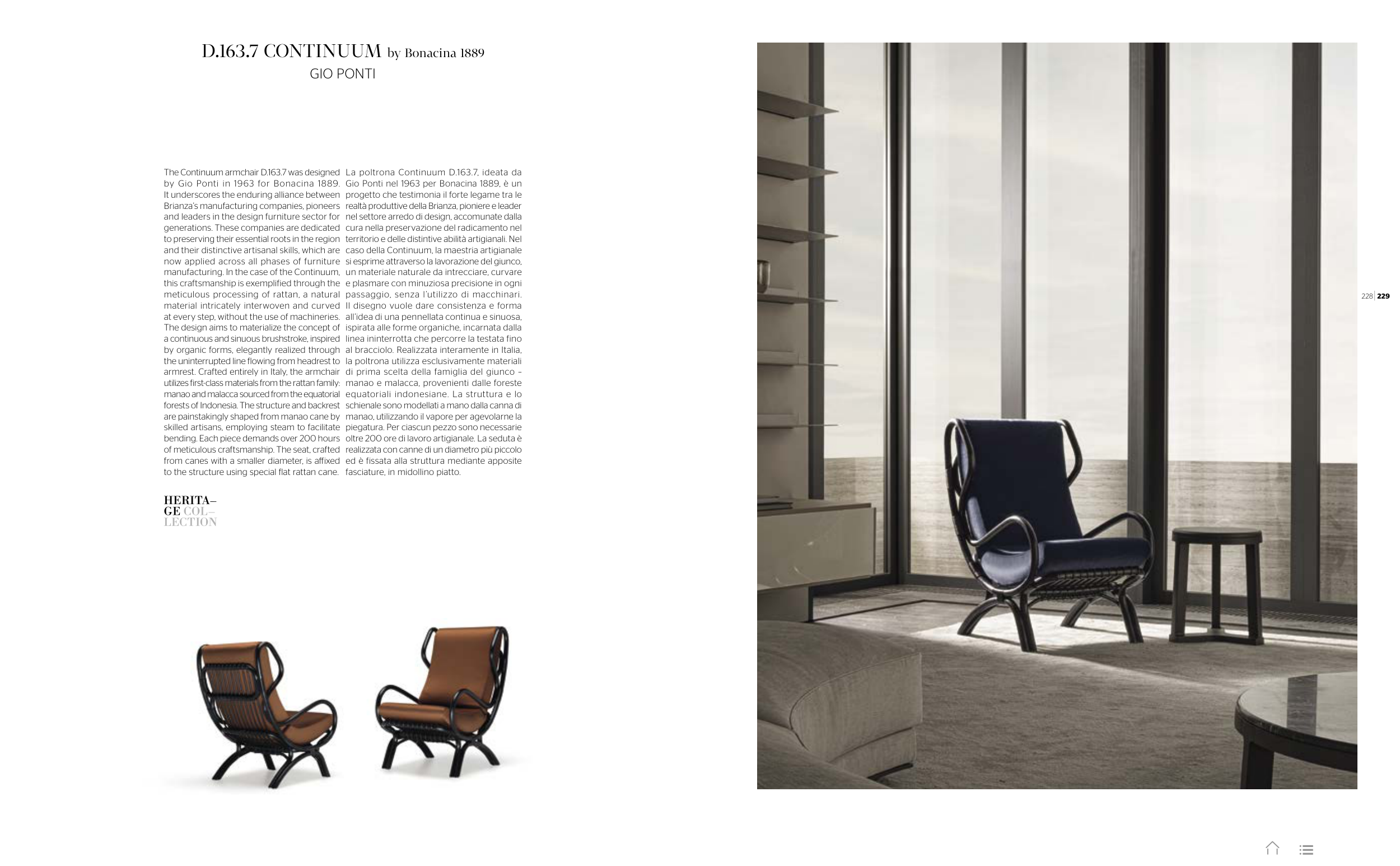228 229
D.163.7 CONTINUUM by Bonacina 1889
GIO PONTI
The Continuum armchair D.163.7 was designed
by Gio Ponti in 1963 for Bonacina 1889.
It underscores the enduring alliance between
Brianza’s manufacturing companies, pioneers
and leaders in the design furniture sector for
generations. These companies are dedicated
to preserving their essential roots in the region
and their distinctive artisanal skills, which are
now applied across all phases of furniture
manufacturing. In the case of the Continuum,
this craftsmanship is exemplified through the
meticulous processing of rattan, a natural
material intricately interwoven and curved
at every step, without the use of machineries.
The design aims to materialize the concept of
a continuous and sinuous brushstroke, inspired
by organic forms, elegantly realized through
the uninterrupted line flowing from headrest to
armrest. Crafted entirely in Italy, the armchair
utilizes first-class materials from the rattan family:
manao and malacca sourced from the equatorial
forests of Indonesia. The structure and backrest
are painstakingly shaped from manao cane by
skilled artisans, employing steam to facilitate
bending. Each piece demands over 200 hours
of meticulous craftsmanship. The seat, crafted
from canes with a smaller diameter, is affixed
to the structure using special flat rattan cane.
La poltrona Continuum D.163.7, ideata da
Gio Ponti nel 1963 per Bonacina 1889, è un
progetto che testimonia il forte legame tra le
realtà produttive della Brianza, pioniere e leader
nel settore arredo di design, accomunate dalla
cura nella preservazione del radicamento nel
territorio e delle distintive abilità artigianali. Nel
caso della Continuum, la maestria artigianale
si esprime attraverso la lavorazione del giunco,
un materiale naturale da intrecciare, curvare
e plasmare con minuziosa precisione in ogni
passaggio, senza l’utilizzo di macchinari.
Il disegno vuole dare consistenza e forma
all’idea di una pennellata continua e sinuosa,
ispirata alle forme organiche, incarnata dalla
linea ininterrotta che percorre la testata fino
al bracciolo. Realizzata interamente in Italia,
la poltrona utilizza esclusivamente materiali
di prima scelta della famiglia del giunco –
manao e malacca, provenienti dalle foreste
equatoriali indonesiane. La struttura e lo
schienale sono modellati a mano dalla canna di
manao, utilizzando il vapore per agevolarne la
piegatura. Per ciascun pezzo sono necessarie
oltre 200 ore di lavoro artigianale. La seduta è
realizzata con canne di un diametro più piccolo
ed è fissata alla struttura mediante apposite
fasciature, in midollino piatto.


